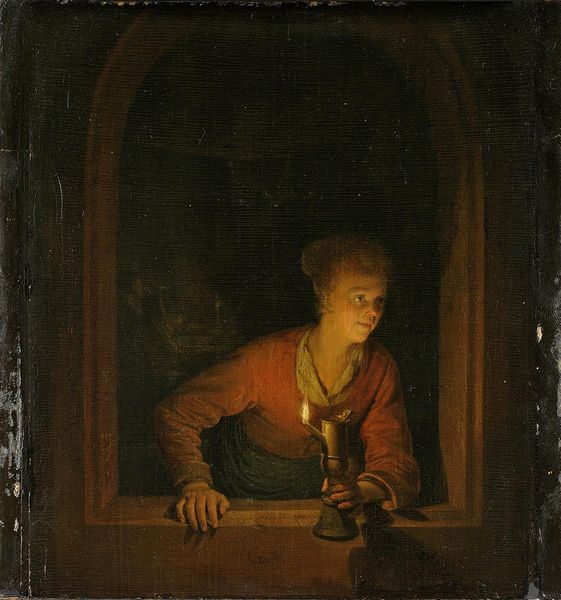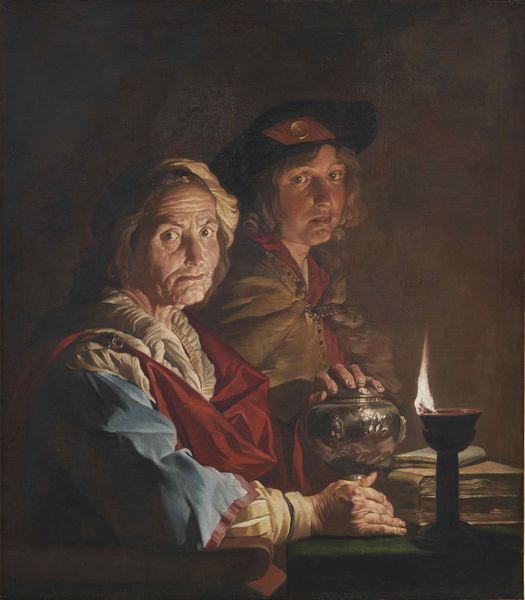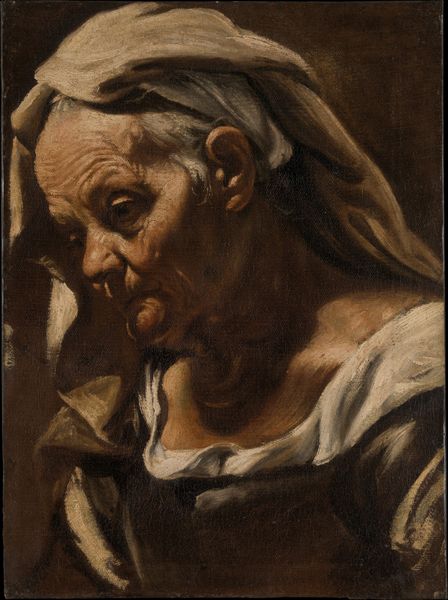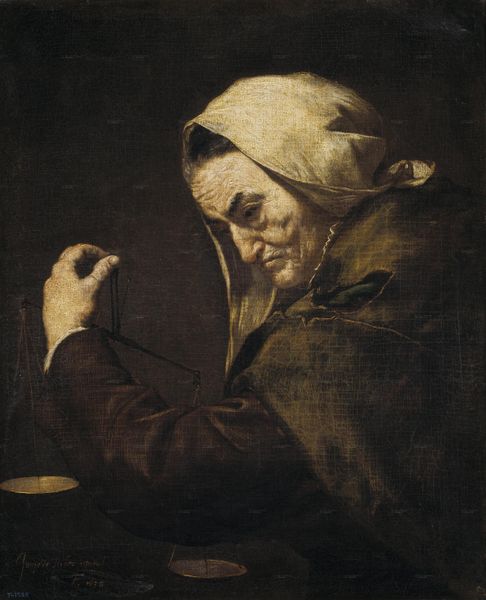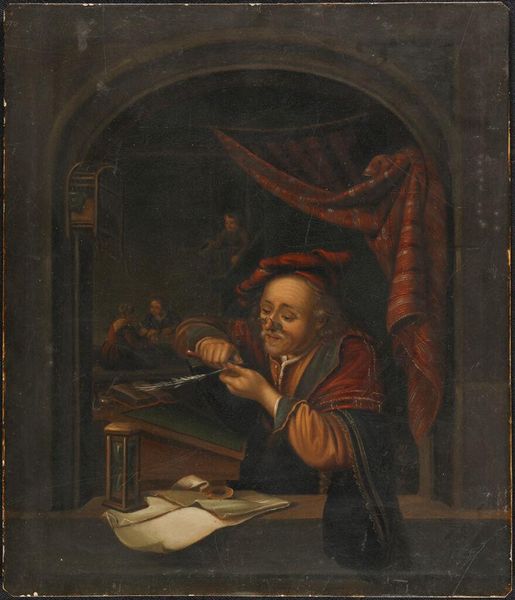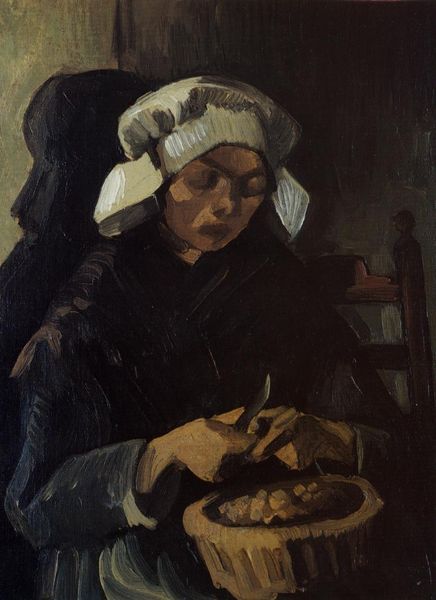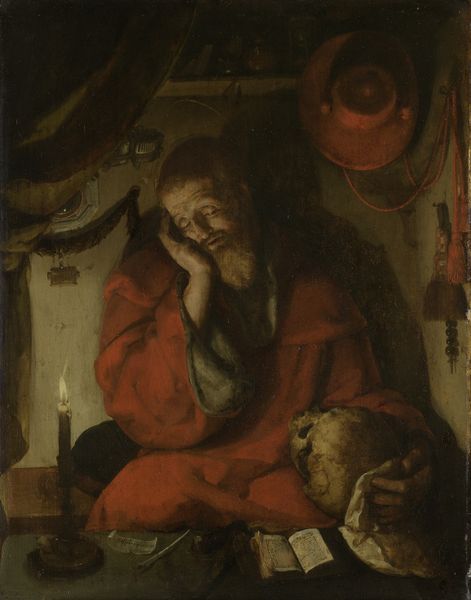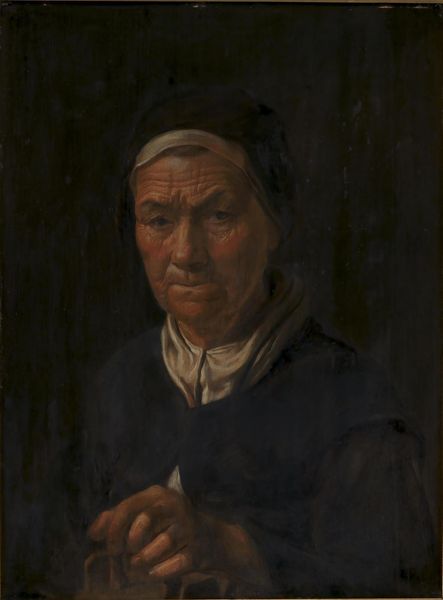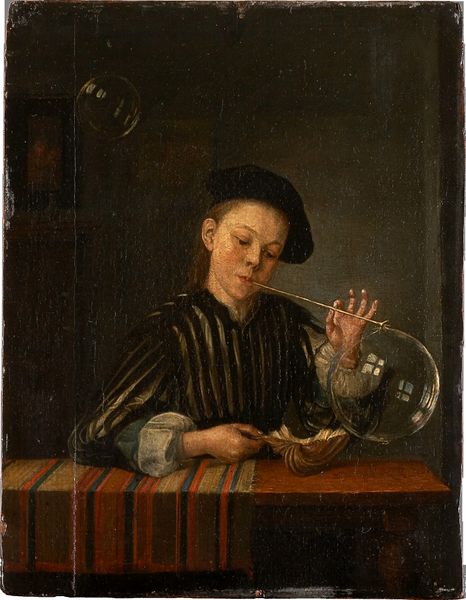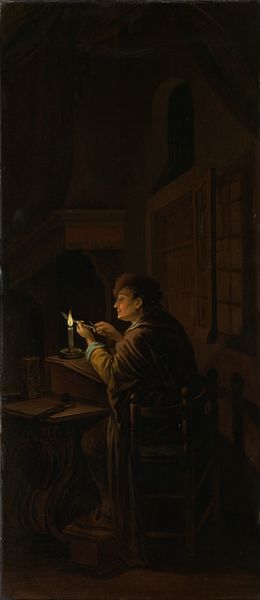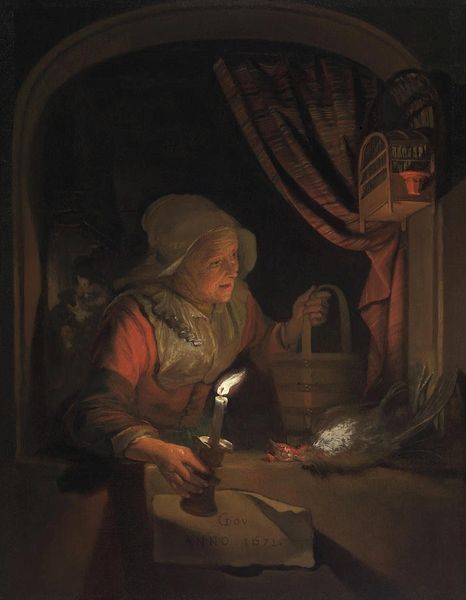
oil-paint
#
portrait
#
baroque
#
oil-paint
#
oil painting
#
chiaroscuro
#
genre-painting
Dimensions: 30 5/8 x 25 1/8 in. (77.8 x 63.8 cm)
Copyright: Public Domain
Curator: Here we have Matthias Stom’s oil on canvas, "Old Woman Praying," created sometime between 1637 and 1643. It’s a Baroque painting currently housed at the Metropolitan Museum of Art. Editor: My first impression is somber. The dramatic lighting, the aged face, and those prayer beads hanging heavy—it speaks to a life weathered by hardship, illuminated by faith. Curator: Indeed, the chiaroscuro—the stark contrast between light and dark—immediately draws the eye. The light source seems almost divine, casting deep shadows that emphasize the woman's wrinkled skin, signs of age but also wisdom. The prayer beads themselves, that circular form, are symbols of continuity, a visual rosary leading back to historical faith. Editor: But who is she, really? Genre paintings like this often depicted anonymous figures, representatives of a social class, their individual identities erased in favor of the universal. I can't help but think of the women of that era, their agency and social visibility suppressed. Is this work complicit in that suppression, or does it offer a moment of quiet dignity? Curator: I believe it does offer dignity, even within those constraints. Stom captures a deep interiority, a profound sense of peace found in faith. Consider, the light illuminates not material wealth but the human face in devotion, revealing that inner world, the spiritual resilience held in the darkest of times. Editor: I appreciate your interpretation. However, I also read it as a potent reminder of limited choices women of her time possessed, finding their primary value as keepers of faith, bound within social structures that offered so little individual freedom. This might not only tell a story about personal belief but about the restricted paths offered to the marginalized. Curator: It's that dance between universal archetype and individual experience that keeps the symbolism so potent, isn’t it? The candle flickers, reflecting something deeply historical as it is fundamentally human, and something deeply spiritual, perhaps an individual act that reifies something very old. Editor: A somber moment of introspection, or, perhaps, a silent rebellion. Stom gives us the tools to look and wonder. What's visible is a life of struggle. What’s invisible, and maybe just as real, are the ways in which women carved a space for themselves within rigid social conditions.
Comments
No comments
Be the first to comment and join the conversation on the ultimate creative platform.
